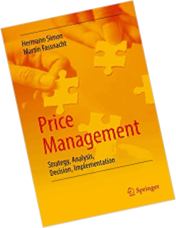Everyone who hoped that inflation would subside soon received a cold shock in mid-November when the latest US inflation data came out. Those numbers reaffirmed the old business maxim that “hope is not a strategy.”
The US consumer price index (CPI) hogged the headlines by increasing at an annualized rate of 6.2% in October 2021, the largest increase in 31 years. The really bad news for manufacturers and distributors, however, lurked in the US producer price index (PPI) report. The aggregated PPI index rose at an annualized rate of 8.6% in October, but that change is deceptive because it masks some even darker trends. The PPI of unprocessed goods for intermediate demand jumped by 56.6% in the 12 months to October 2021. The PPI of processed goods for intermediate demand surged by 25.4%, the highest change for that sub-index since January 1975… as in almost 50 years! To put that length of time in perspective: the Dow Jones Industrial Average closed at a mere 703.69 at the end of January 1975, according to data from Standard & Poor.
 This acute end-to-end price pressure along the value chain means that it is time for most businesses to raise prices (if they haven’t already) or risk taking a huge hit to their profits. Neither option is pleasant, which is why inflation sucks. But when business leaders attempt to raise prices, they tend to overlook one important point that can make this once-in-a-generation wave of inflation less intimidating. They don’t realize that the quality of a price increase — and not the quantity — will ultimately determine their fate.
This acute end-to-end price pressure along the value chain means that it is time for most businesses to raise prices (if they haven’t already) or risk taking a huge hit to their profits. Neither option is pleasant, which is why inflation sucks. But when business leaders attempt to raise prices, they tend to overlook one important point that can make this once-in-a-generation wave of inflation less intimidating. They don’t realize that the quality of a price increase — and not the quantity — will ultimately determine their fate.
What is a high-quality price increase?
The quality of a price increase is a function not only of its speed, but more importantly, its scope, aim, form, and story. In the rest of this post, we will look at the difference between high-quality and low-quality price increases, and then describe the key factors that enable companies to make high-quality price increases.
First, high-quality price increases reflect the idea that costs are only one component of your price decisions, and thus your profits. The other components of the full scope are your customers, your competitors, and your own internal objectives. The remaining five points below will take this full scope into account.
What are the special aspects of high-quality price increases?
In our experience, they:
- De-average the market
- Raise prices without raising prices
- Rely on scenario planning
- Deliver bad news first
- Treat the company as a link in the value chain, not only a supplier
Let’s look at each aspect in detail.
They de-average the market: Do you know the true drivers of your cost pressures? The headline national numbers may look bad, but they are a mix. Some areas are hard hit, while other areas are seeing less pressure. To understand where you can raise prices, by how much, and with what urgency, you need to answer three questions:
- What are your customers facing? The fewer customers you have — and the larger they — the more careful you need to be about raising prices and endangering relationships. Concentrated markets can give customers considerable leverage, because they know they matter to you. But the mix of products that customers buy can give you opportunities to counter that leverage. Specialty products that already have high margins offer latitude for higher price increases, so that you can raise prices less on standard products that face more competition. This knowledge allows you to aim price increases at products and customers where the sensitivity is lowest.Finally, the importance that customers place on price can vary significantly. The consulting firm Bain notes that in supply-constrained industries, price may be less important than supply and inventory availability, because buyers have fewer options. This can also give you latitude for larger price increases.
- What are your competitors facing? If you and your competitors have a very similar cost basis, you need to decide which option is in your own best interests: preserving market stability, launching a price war, or implementing a stronger-than-expected price increase to reset the market’s price levels. The more different and varied your competitors are, the more you can look discretely for opportunities to gain or protect market share. Think of this in terms of your competitive advantages. Prior to this wave of inflation, you and the other players in your market held competitive advantages in areas such as efficiency, cost, flexibility and customization, range of products, quality, or innovation. In each area, someone was best and someone was worst. Shocks such as the current wave of inflation can erode some of these advantages and enhance others. How does inflation make you or your competitors more vulnerable, and how does it make you stronger?
- What do you want? Answering this question requires an honest assessment of what you want to achieve in terms of performance, stability, and reputation. How are you prioritizing market share, volume, revenue, and profit? What are your short- and long-term objectives? With respect to your reputation and your negotiating leverage, you also need to decide whether you want to be treated as a vendor or a partner. Vendors focus on winning the individual sale, while partners look for ways to work with their customers to offset potential price increases through productivity gains, alternative solutions, or other forms of interaction.
 They raise prices without raising prices: In their book Price Management, pricing experts Hermann Simon and Martin Fassnacht recommend that companies consider several options for the form of price increases. Businesses can “raise list prices, change the discount system, change payment terms, introduce surcharges, etc.”
They raise prices without raising prices: In their book Price Management, pricing experts Hermann Simon and Martin Fassnacht recommend that companies consider several options for the form of price increases. Businesses can “raise list prices, change the discount system, change payment terms, introduce surcharges, etc.”
Each of these options is an effective price increase, but only the change in list prices is an explicit, direct increase. Leaving list prices unchanged can be important for businesses that don’t want their prices to cross a major threshold. Tightening discount procedures, reducing some discount levels, and implementing temporary surcharges for certain products or services offer more flexibility to tailor a price increase to an individual customer.
They rely on scenario planning: It should be clear by now that you have many options to raise prices, and each will have different effects on customers and on your own goals. Scenario planning allows you to identify weak assumptions, assess risks, and expose the unintended consequences of your actions. Businesses make high-quality price increases after running realistic numbers for what will happen before making a decision.
One important component of scenario planning is break-even analysis. If you implement a price increase that still leaves you with a lower profit margin, how many more units would you have to sell so that your absolute profit level remains constant? If you implement an aggressively high price increase — whether list prices or through surcharges and tighter discounts — how much volume can you afford to lose and still keep your absolute profit level constant?
They deliver bad news first: This is basic psychology, derived from what Nobel Prize winner Daniel Kahneman calls prospect theory. People naturally assign greater weight to bad news than good news (assuming the objective effect is the same), so it is in a company’s interest to deliver bad news fully and upfront, then follow that with smaller doses of good news. Delivering bad news in repeated small doses makes customers nervous and uncertain; it’s a bad basis for a sales story.
 They treat the company as a link in a value chain: B2B customers are by definition suppliers and customers. Your sales teams need to pass on price increases, while your procurement teams need to try to keep costs in check. Both sides should work together. As McKinsey noted in an article last summer on mitigating inflation, one chemical company has procurement and business teams meet multiple times a week to ensure alignment on the inflation pass-through strategy.
They treat the company as a link in a value chain: B2B customers are by definition suppliers and customers. Your sales teams need to pass on price increases, while your procurement teams need to try to keep costs in check. Both sides should work together. As McKinsey noted in an article last summer on mitigating inflation, one chemical company has procurement and business teams meet multiple times a week to ensure alignment on the inflation pass-through strategy.
What is a low-quality price increase?
Why should businesses avoid making low-quality price increases? Let’s look at what they have in common.
One characteristic of low-quality prices is their blanket nature. The knee-jerk way that most businesses respond to rising costs is to make direct across-the-board price increases, often in round numbers. This is an appealing option, because the increases are clear and quick. They aim at everyone, and the story couldn’t be simpler to communicate: “Our costs have risen, so we need to raise our prices.”
But what you gain in speed, you sacrifice in quality, for the reasons we cited above. Most businesses have much better options to make high-quality price increases to protect their business. Many businesses have also worked hard to differentiate their prices in order to meet their objectives. Implementing indiscriminate across-the-board price increases during a period of inflation undermines those efforts.
How do you enable high-quality price increases?
The key factors behind high-quality price increases are:
- Real-time visibility into your data across a shared platform
- The ability to run discrete scenarios to test different scopes, aims, forms, and stories.
- The patience to plan before acting
It may seem odd for us to recommend patience at a time when inflation is higher than in a generation or two. Urgency and patience seem contradictory. But to paraphrase the legendary UCLA basketball coach John Wooden: “If you don’t take the time to do it right, when will you find the time to do it over.” The key difference is that the first two factors above — the right data and the right tools — shorten your planning horizon significantly and enable you to make fast, sound, high-quality price decisions, the kind of decisions that keep “hope” out of the strategic equation and keep inflation from sucking your profits.
